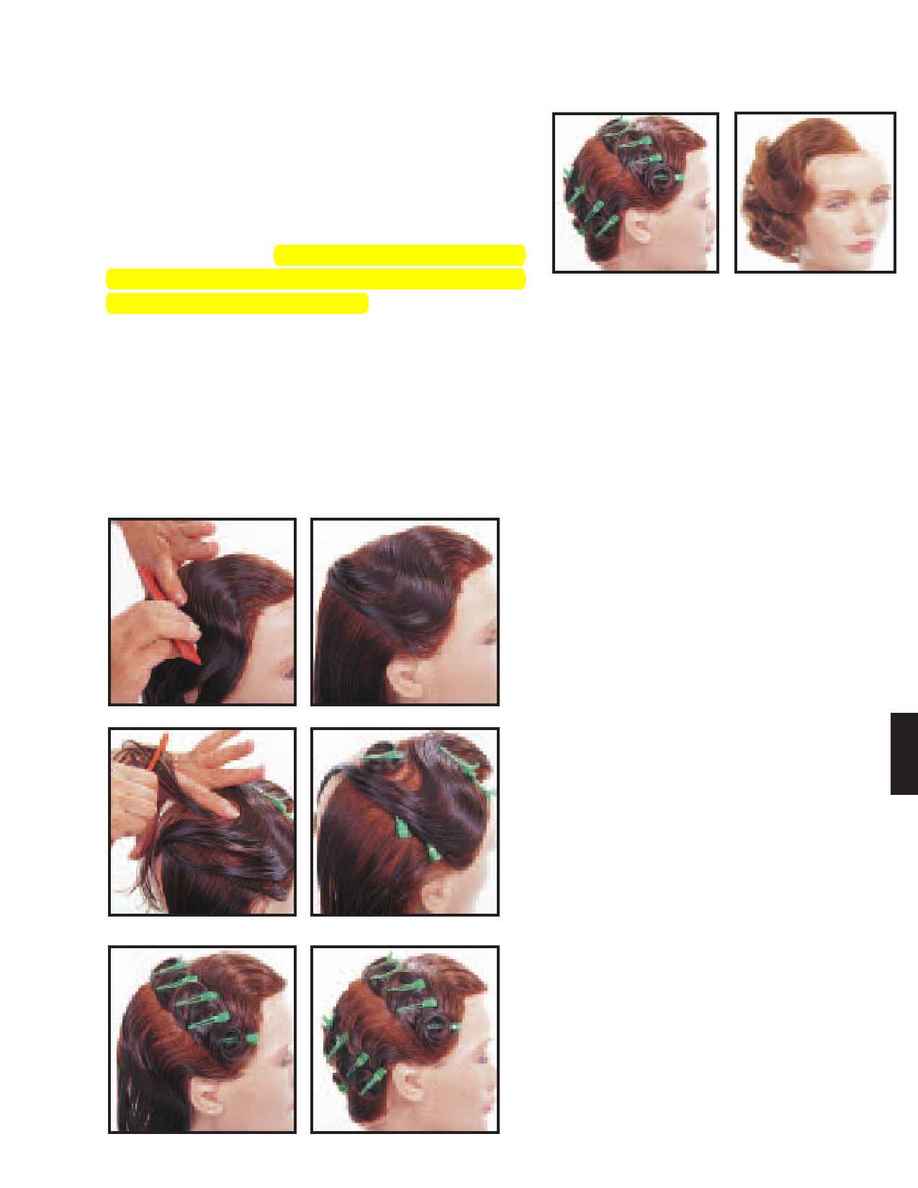
Skip Waves
A wave pattern that combines fingerwaves and flat
pincurls is called a skip wave.
The first oblong remains
molded (skipped) and the next oblong is set in flat pincurls.
Skip waves achieve wide, deep-flowing waves and are gen-
erally positioned on the side of the head, either vertically or
horizontally.
One oblong followed by a row of pincurls
is called a ridge curl.
An alternation consisting of at least
two oblongs and two rows of pincurls creates a skip wave
and produces a strong wave pattern.
Skip Waves with Flat Pincurls
Skip waves are composed of alternating oblongs connected by a ridge. One of the oblongs is molded and
the other is set with pincurls or rollers. The oblong that is set supports the molded shape and gives more
dimension to the design. The pattern is repeated in order to create a series of skip waves. Flat, volume
or indentation pincurls can be used to create a variety of undulating patterns. Here, flat pincurls are
used to create a wave pattern with alternating oblongs that blend and flow in a curvature movement.
Mold two oblongs with a connecting
ridge.
The first shape travels in a
counterclockwise direction and the
second oblong travels clockwise.
Set flat pincurls in the second
oblong. Begin setting at the open or
concave end. Do not disturb the shapes
or the ridge as you position the pin-
curls.
Complete the row of pincurls. Mold
two more oblongs. Leave the first
oblong undisturbed and set the
second in flat pincurls.
Dry the hair
completely before combing this pattern
out.
371
1
0
HAIRSTYLING
